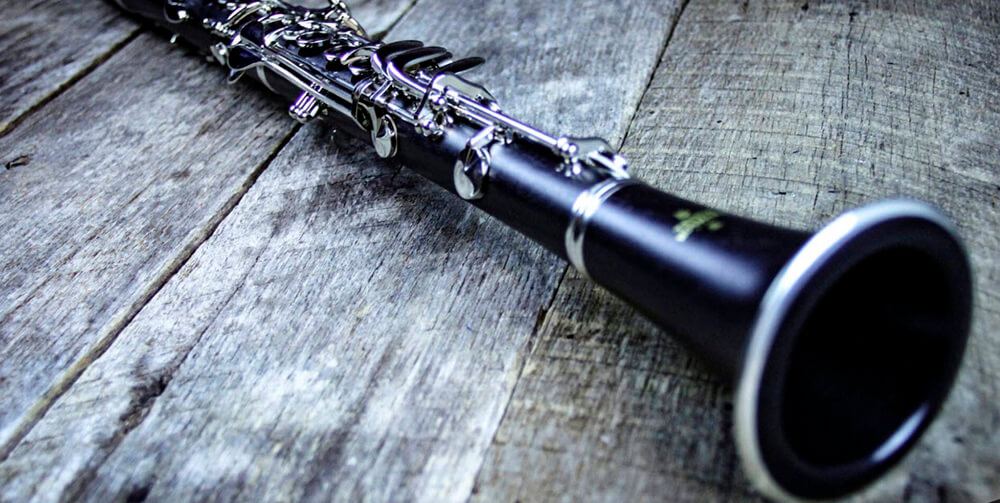WANT TO PLAY THE CLARINET?
3/19/2021
The clarinet is as versatile as it is fun. It is a great woodwind instrument to learn to play. If you're unsure on how to properly clean your instrument, our list of advice is designed to assist beginners. For more personalized, speak with your music instructor.
What Equipment Is Needed? There are a few essential pieces of equipment for every clarinetist: Reeds Ligatures Mouthpieces Did the clarinet come with a stock mouthpiece? If so, it is time to upgrade a better mouthpiece that provides the desired sound. All stock ligatures should be eliminated as well. Cloth ligatures offer more control than metal ones, so most educators recommend that their students transition into the usage of metal ligatures to open up their sound. The reed's strength should be determined by the mouthpiece. A “3” is usually the most common but it is not right for everyone. Be sure to speak with your music educator to find out about the strength that is right for you. How Is Embouchure Improved? This process doesn’t happen overnight. It’s an often overlooked performance aspect that involves the proper coordination between your upper lip, lower lip, chin and teeth. To begin, drop the jaw so that it is relaxed and not forced open. From there, move the jaw from side to side slightly, so that it can loosen up. Once full relaxation is achieved, roll your bottom lip ever so slightly over your lower teeth and firm up the mouths's corners. They should be brought forward and in, much like a smile. Place the index finger against the space between your top teeth and use the upper lip to press downward onto your finger. (The chin should automatically point downward once this step is taken.) Remove the finger, do not move a muscle, insert 1/4th of your mouthpiece and keep the upper teeth resting on top. Perfect embouchure has been achieved! What About Reeds? Finding the right clarinet reeds and maintaining them in the proper manner is crucial to your success. Choose the correct reeds for your mouthpiece and the level of pressure used. Do not moisten reeds with saliva, as these acids are highly detrimental to cane. When a new box of reeds is opened, do not test them all at the same time. The lip desensitizes and reed impressions are inaccurate. The break in process should be steady and slow. It does not take place in one day, they are played for a few minutes each day. When it comes to cleaning and maintenance, rinse your reeds in water after playing and use a soft cloth to dry them before they are stored on glass. Reed adjustment requires trial and error, so be sure to speak with your clarinet instructor for further advice. Any Practicing Advice? Most new clarinet players are misguided as far as practicing is concerned. The amount of time spent practicing is not as important as how that time is spent. An hour of efficient practicing is more effective than three hours of distracted practice. Practice time should consist of warm-ups, enjoyable sheet music and technique practice. Keeping up the technical side of things can be tough. Always practice technique, no matter what. Each practice should begin with a warm up, you can switch between sheet music and technique as necessary. What If I Have a Bad Day? Bad clarinet days are a very real thing. Practice can be frustrating at times. The trick is to remain calm. Don't force yourself to complete technique exercises or run through scales. At times like these, it is important to simply play through some of your favorite tunes. Spending time playing what you want to play lets you get into the flow of playing more rapidly. Becoming frustrated? There's nothing wrong with skipping your practice session for that day. Remember: this process is a challenge. There are going to be good days and there will be bad ones. Don't be discouraged. Your determination will pay off in the long run. If you are interested in taking a beginner clarinet lesson on Zoom or In Person, please contact us at (818) 902-1233 or on our website at https://www.losangelesmusicteachers.com/online-clarinet-lessons-in-burbank-ca.html The saxophone is one of the easiest of the woodwinds to learn at the beginning level but like all instruments it’s difficult to master. If you want to see some complete beginner’s progress, I’ve made videos of my students. It will show you what you can potentially do (if you practice every day about 45 minutes). These students were not taught to read music (reading adds a whole lot of other brain effort which slows down the process). The students in these videos are all playing by ear, just reading the chord changes but everything is improvised. Here’s a few: If you are interested in taking lessons on Zoom or In Person, please contact us at (818) 902-1233 or on our website at https://www.losangelesmusicteachers.com/online-jazz-improvisation-lessons-in-burbank-ca.html
|
Archives
July 2024
Categories
All
|
|
Music Lessons Available on All Instruments:
Piano Lessons
Guitar Lessons Voice Lessons Drum Lessons Violin Lessons Cello Lessons Saxophone Lessons Jazz Improvisation Lessons Flute Lessons Clarinet Lessons Singing Lessons Acoustic & Elec Bass Songwriting & Production |
Contact Us Now
|
Website by Never Alone Business Services


 RSS Feed
RSS Feed



